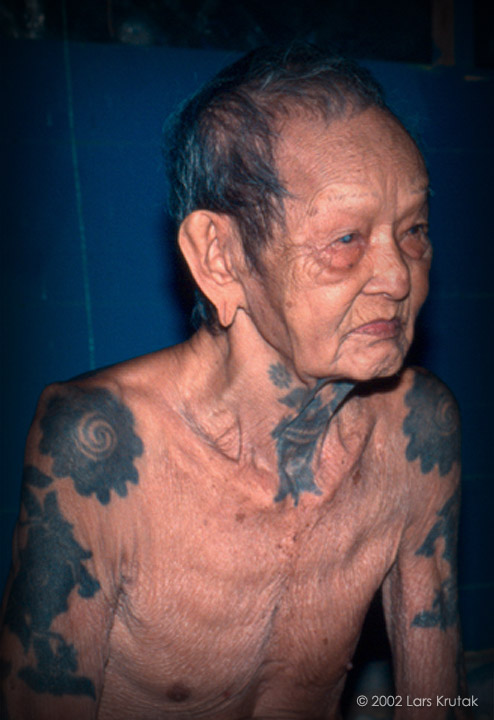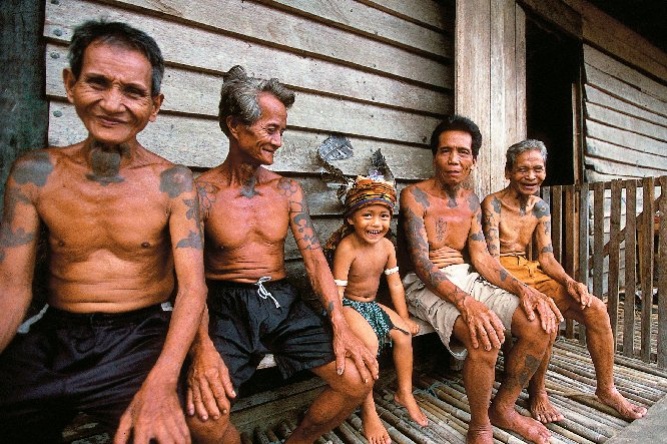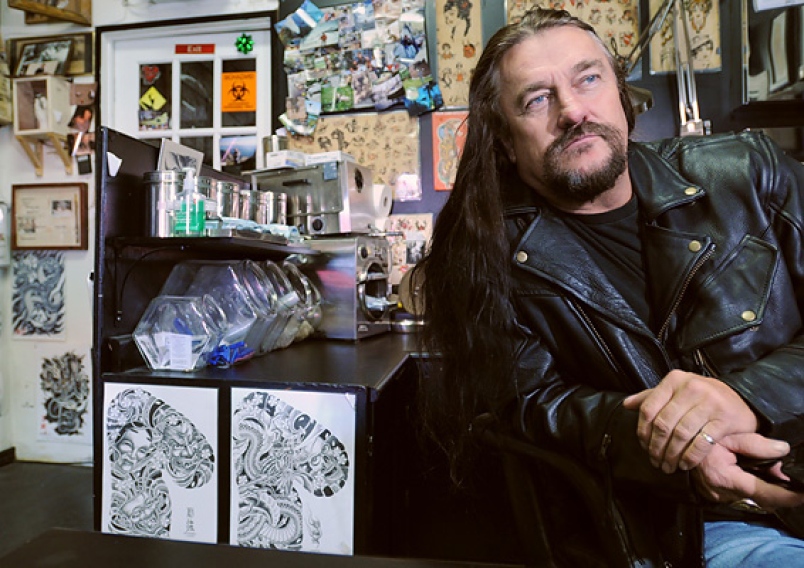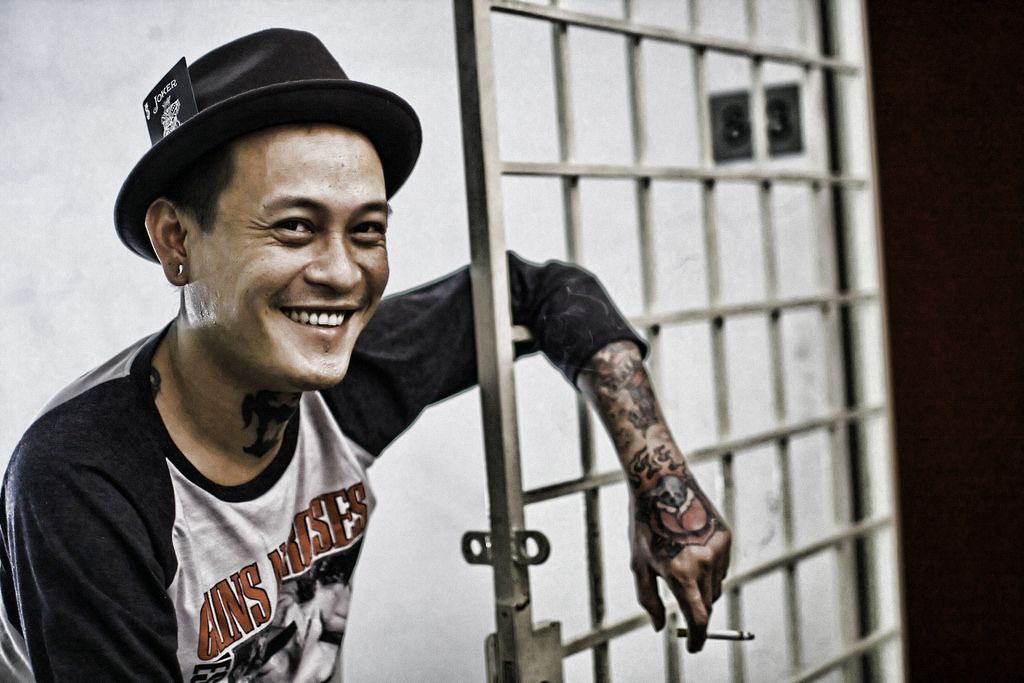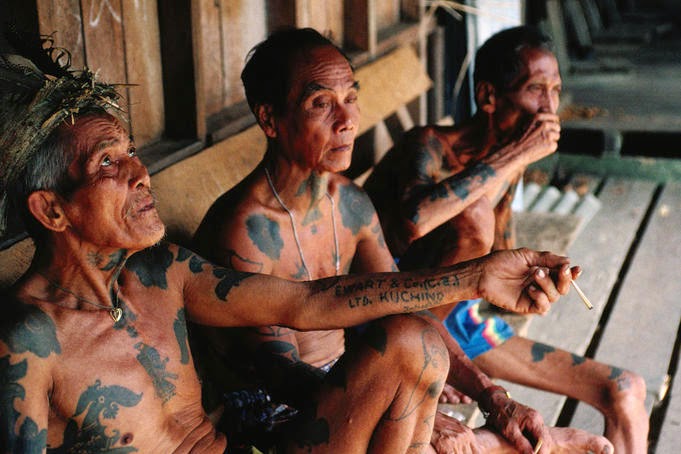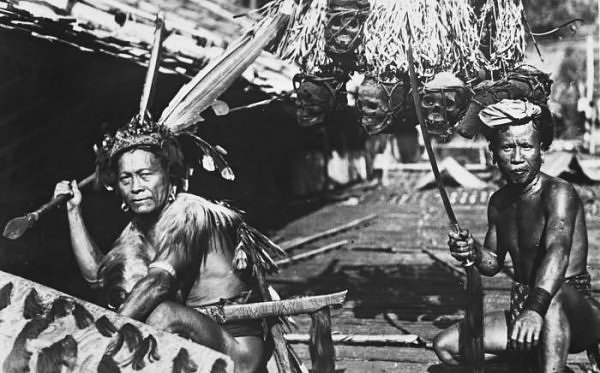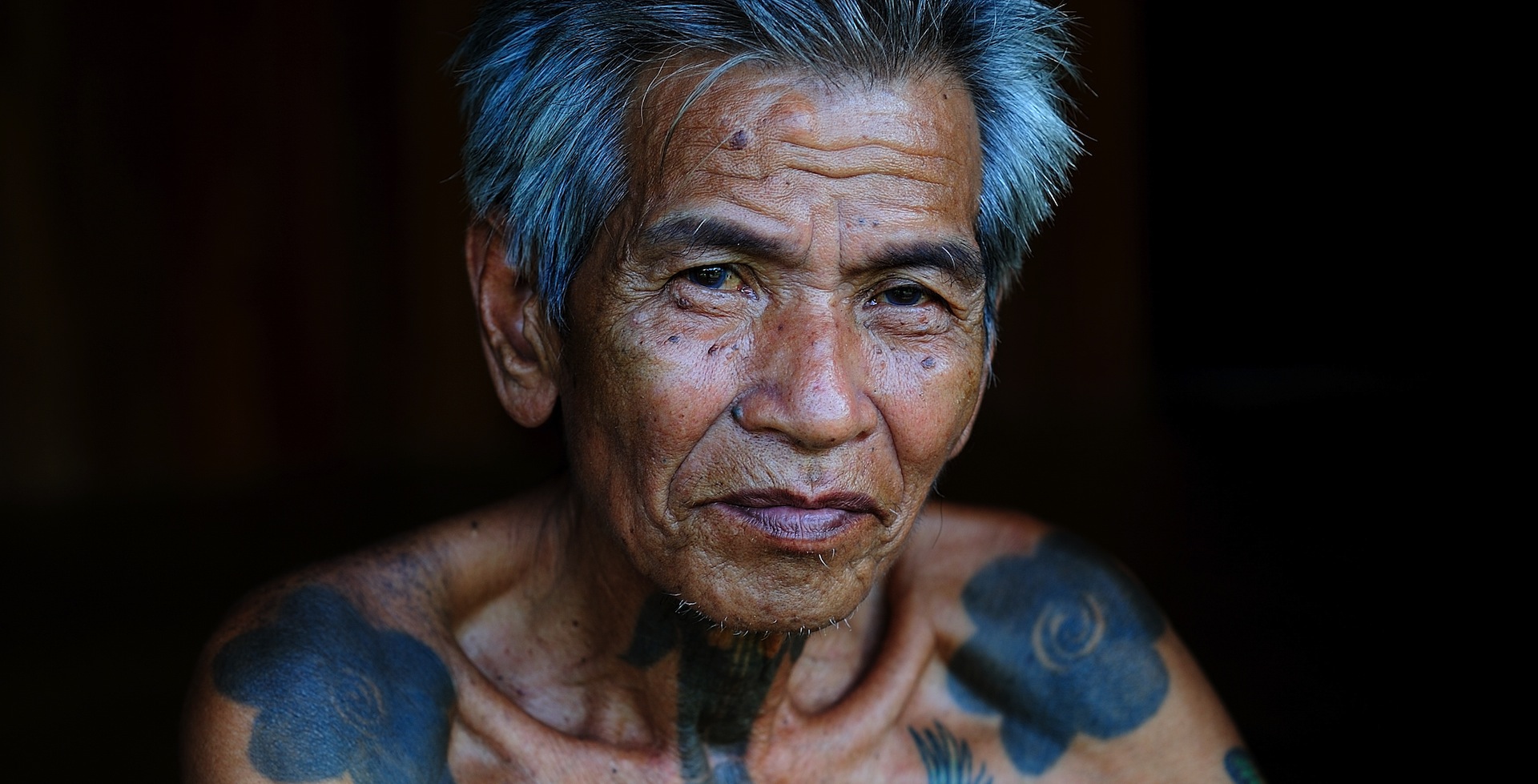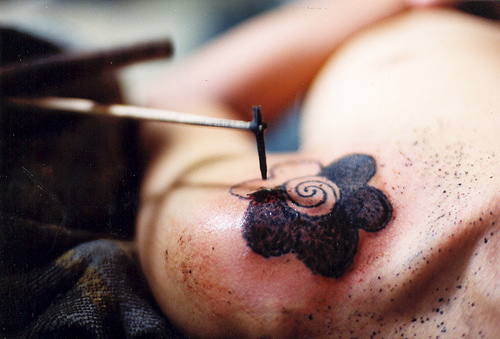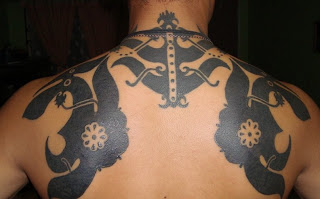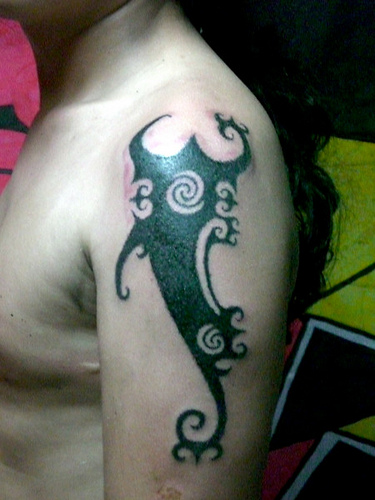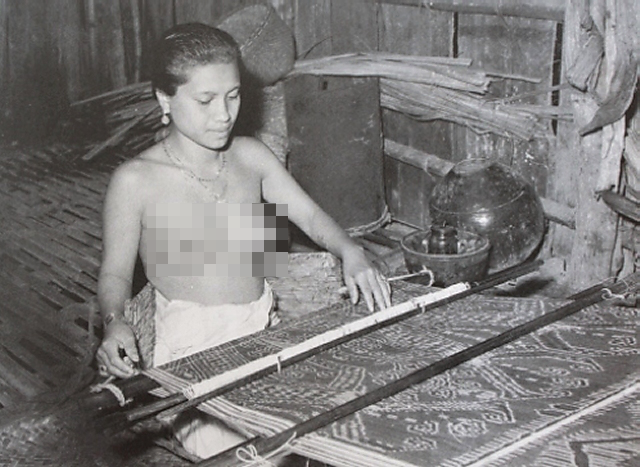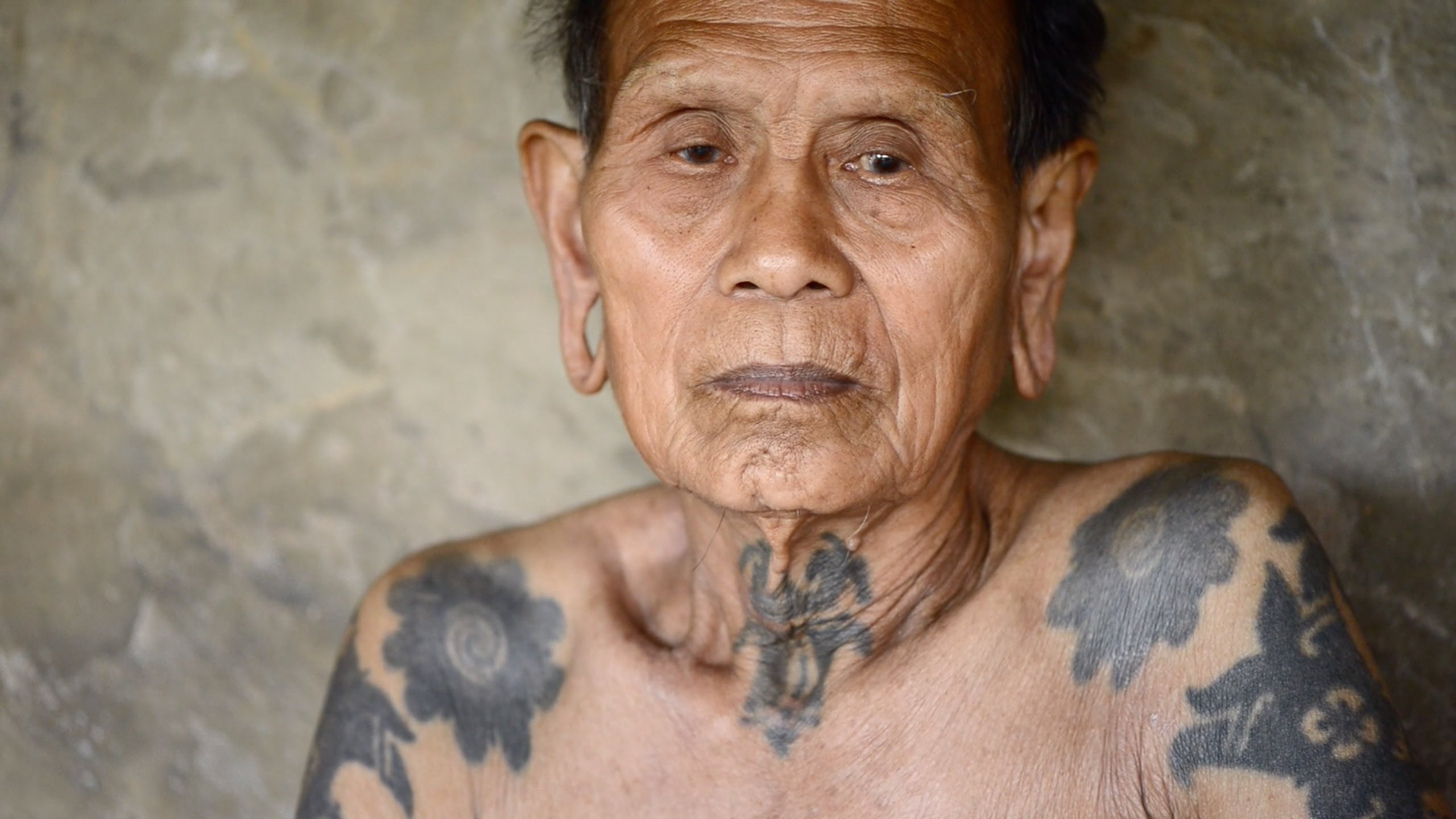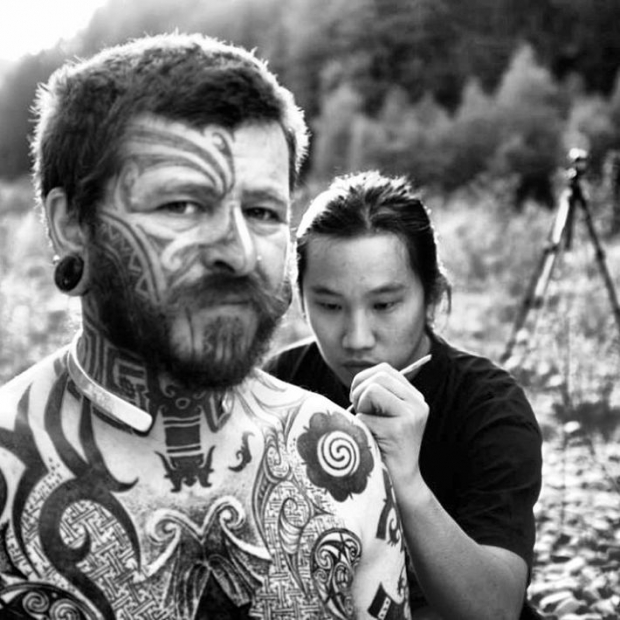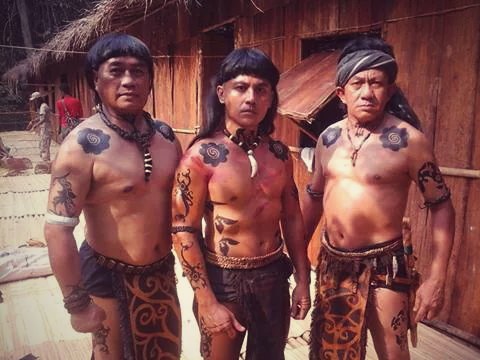Sarawak’s Tribal Tattoos Have An Ancient History Not Many Know Of Today
A peek into one of the world's oldest body art tradition.
Did you know that Iban warriors back in the 40s fought against Japanese soldiers that came equipped with machine guns, armed with only tattoos and spears?
All but one soldier came back alive.
In 2002, American tattoo anthropologist Lars Krutak photographed an elderly Iban tattoo artist, Maung of the Skrang River in Sarawak.
Maung reportedly fought Japanese soldiers that were armed with heavy machine guns during the second world war and Japanese occupation in Malaya with nothing but his spears and charmed tattoos.
The oldest surviving Iban tattoo artist from Skrang river claimed that all the tattoos that he hand-tapped were magical thanks to the meteorite that dips in all the tattooing inks he makes.
"They just went around and through me and I was never wounded," said Maung, as quoted by Lars Krutak.
The word tattoo is said to have originated from the Tahitian word "tatu", which refers to the act of marking something.
The Ibans believe that their tattoos have protective powers in the form of charms that are given by antu (spirits) through dreams, when one is asleep.
Ibans without tattoos are said to be virtually invisible to gods, as the spirits attached to these tattoos allow the men to be seen by their gods.
Krutak says that about 500 years ago, the art of tattooing was practised widely by approximately 1,000 indigenous tribes all around the world, but over the years most of these ancient tribes have vanished.
An enlightening documentary by Canadian tattoo artist Thomas Lockhart, and writer cum historian Vince Hemingson, shed light on the fascinating world of the vanishing art of traditional Iban tattooing
Both Tom and Vince go on an interesting journey to discover ancient Iban tattoos along with prominent tattoo artists, brothers, Eddie and Sam David of Borneo Ink.
The 49-minute documentary starts with Thomas and Vince’s journey to the longhouse of their grandfather’s brother, an elderly gentleman named Aki Busai by the Skrang river.
Along the way, they speak about how tattoos were viewed as "primitive and a mark of a savage" by urbanites.
The David brothers are of Iban descent but grew up in Kuala Lumpur and set up their own tattoo parlour, Borneo Ink in the country's capital in 1996. Borneo Ink happens to be one of the very few places in the country that still offers the art of traditional hand-tapped tattoo.
Here are some interesting things about the mysterious world of traditional Iban tattoos:
1. Traditional Iban tattooing practice is deeply associated with headhunting and is synonymous with the coming-of-age ceremony for men, bejalai
Tattoos have always been enveloped in a mysterious blanket of tradition, culture and stories from ancient times.
According to a book titled, 'Tattoo History Source Book: An Anthology of Historical Records of Tattooing Throughout The World' by Steve Gilbert, Borneo's illustrious tattoos are considered sacred, magical and are tied closely to the beliefs of the Dayak community.
2. The Iban community believe that the traditional hand-tapped tattoos have the ability to intimidate evil spirit and is a language on its own
Their boatman is adorned with tattoos all over his body, from his arms to legs and thighs. In the midst of all those traditional Iban tattoos, sits a cowboy designed tattoo.
In the Vanishing Tattoos documentary, Borneo Ink's Eddie explains how the Ibans are getting more interested in modern tattoos as opposed to the traditional ones.
While tattooing is mostly regarded as a form of body art in present day, it was previously and is still deemed to be something that is symbolic to the lifestyle and daily practices of the native tribes in Borneo.
Borneo tattoos are usually the intricate combination of images of humans, animals and plants in a single design, expressing the integration of all living things in the world.
3. One of the most fascinating things about traditional Iban tattoos, lies in the process and its tools. It is said that a hand-tapped tattoo can last and look its best even after years of being exposed to harsh weather conditions.
Iban tattooist Herpianto Hendra and his assistant Erzane NE hand-tapping an elderly gentleman on the Kapuas River, Kalimantan
Image via Smithsonian InsiderThe tattoo craftsmen usually make the their tools for tattooing from bamboo poles and the ink is either from soot or powdered charcoal.
According to tattoo anthropologist, Lars Krutak, some tattoo artists have even been known to "spike" their ink with animal bones or pieces of meteorite to increase the protective powers of the tattoos.
Tattoo artists would typically use a mallet and a wooden staff with bamboo needles and hit rhythmically on the skin to achieve the desired design. The skin is usually stretched by another person for clean, precise lines and details.
4. The most basic type of Iban tattoo is the bunga terung design. It is usually the first tattoo that a man gets before going on his bejalai or coming-of-age ceremony.
The bunga terung tattoo is said to be inspired by the design of the aubergine flower and it is mostly tattooed at the shoulders, just by the edge of the collarbone. The spiral in the middle of the bunga terung design is said to originate from the ribbed design on the belly of a tadpole which signifies the beginning of life.
According to blog posting on Jedrzej's Borneo Blog on the history of Iban tattoos, the bunga terung tattoo is placed near the shoulder as it is usually where the straps from backpacks rest.
The tattoo is believed to help strengthen the wearer during his bejalai journey into the woods. During the journey, the young man is said to gain his fame and wealth by helping out other neighbouring Iban communities and the favours would be gifted with tattoos.
5. Each tattoo's design and placement refers to a particular meaning and significance. A tattoo on the back of a man is said to protect the wearer from having his head cut off.
The documentary also highlights how the backpiece serves as a protection against evil spirit and it is said to symbolise the connection to gods that offer guidance and protection to the wearer.
There are a few differing interpretations as to what these designs mean. It is also noted that frogs are an important aspect of the Iban mythology as the creator of men and a frog design tattooed on the throat is believed to protect warriors from losing their heads during battles.
Another common design, is the scorpion tattoo, which is usually placed at the arms or thighs of a man and symbolises the journey of the wearer.
6. It is not only the men who customarily get tattoos in the Iban community. Traditionally, Iban women's tattoos are associated with weaving ceremonial garments that are used to hold freshly severed heads from headhunting trips.
An Iban woman photographed weaving the 'Pua Kumbu' for ceremonial uses
Image via The Weaving ProjectAccording to the Vanishing Tattoos documentary, the Ibans believe that the blood red dye used in weaving brought the female weavers into a dangerous contact with the spirit world. Weaving is also known as women's war.
As a protection, women received tattoos in the form of scorpions and centipedes that are supposed to repel evil spirits.
While it was a common practice back in the days, women's tattooing in the Iban community has become a rare thing over the years as there is no longer a need for weaving ceremonial garments for headhunting ceremonies.
Traditional tattoos are a significant part of the world's rich history.
However, the past century has seen the growth and formation of negative perceptions about tattoos.
Over the past few decades, tattoos have gained a great deal of popularity in the world and it is no longer exclusive to indigenous tribes.
The intricate body art has become a common sight, with people from all walks of life donning it according to their preferences.
Unfortunately, since tattoos have a history of being associated with gangs and criminal activities, negative perceptions about people with tattoos have developed over the years. Surveys and research reveal that people with visible tattoos have lesser chances of attaining a job.
However, thanks to more democratic workplaces and better awareness about tattoos, people are starting to become more accepting towards the idea of tattoos and that it is merely a form of body art that has nothing to do with a person's personality and abilities.
With tattoos gaining popularity among the masses, more people are also opting for the traditional designs. Is it offensive for non-Ibans to get traditional tattoos or even alter them?
Traditional Iban tattoos are considered as sacred symbols that connect the community to their gods and protect them from evil spirits. Ibans receive the tattoos as rewards and as an illustration of their journey in life.
Since these symbolisations make it an integral part of the Iban culture and tradition, it may be deemed offensive for people from other communities to get these traditional tattoos without understanding its significance.
It can also be seen as cultural appropriation which is defined as taking or adopting another community's traditional knowledge, cultural expressions, intellectual property. This includes a particular culture's dance, music, sacred objects, cuisine, medicine and religious symbols.
Cultural appropriation can be seen as a form of oppression on minority cultures as it has the possibility to alter and strip a community's age old traditions and cultures.
However, the Iban community has been known to be warm and generous with sharing their traditions and culture
With tattoo parlours like the Borneo Ink and Borneo Headhunters Tattoo and Piercing Studio opening their doors and offering their services that include traditional Iban tattoos, it is proven that it is acceptable for non-Ibans to get the traditional tattoos.
While it is entirely possible for it to still be offensive to some, non-Ibans that are interested in the tribe's traditional tattoos can read up on it beforehand to better understand the meaning and significance attached to specific designs.
